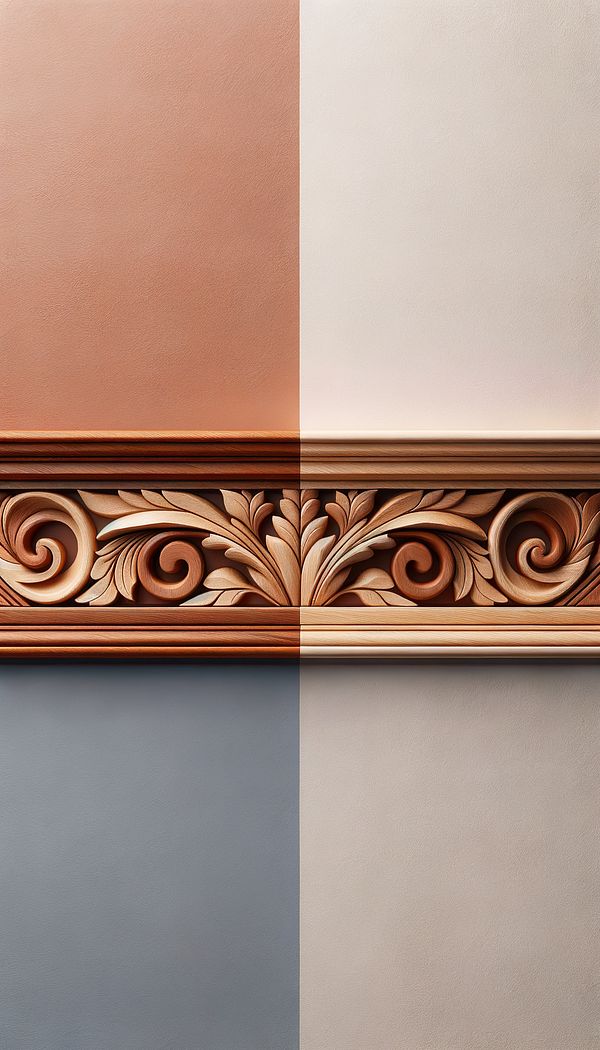What is a Dado Rail?
A dado rail is a horizontal strip of molding attached to a wall, typically around waist height.
Description
A dado rail, also known as a chair rail, is an architectural feature that dates back to historical times when it served the dual purposes of protecting walls from being damaged by chairs and separating different types of wall decorations, such as wallpaper and paint. Positioned approximately at waist height or one-third the height of the wall, its placement can vary depending on the room's architecture and design preferences.
In contemporary interior design, dado rails serve both a functional and aesthetic purpose. They can protect walls in high-traffic areas from damage caused by furniture and other objects. Aesthetically, dado rails provide a visual break in a wall, creating an opportunity to decorate above and below the rail with different colors, textures, or materials. This decorative flexibility allows for the creation of intricate and dynamic room designs.
Installing a dado rail can be a simple process, but it requires precision and an understanding of the room's design elements. It's also an affordable way to add character and sophistication to a space, making it a popular choice among interior designers and homeowners alike.
Usage
Dado rails are commonly found in dining rooms, hallways, staircases, and other living spaces. They can be made from various materials such as wood, plaster, or polyurethane, each offering different textures and styles that can complement the overall design theme of a room. Combinations of paint, wallpaper, or textile wall coverings can be used above and below the dado rail to create visually engaging spaces.
FAQs
-
How high should a dado rail be installed?
A dado rail is typically installed at about one-third the height of the wall, generally around 32 to 36 inches from the floor, but this can vary based on architectural and design considerations.
-
Can I install a dado rail in a modern home?
Yes, a dado rail can be incorporated into modern homes. It can serve as a distinctive architectural element that adds depth and character to the space, regardless of the home's overall design style.
-
Is it difficult to install a dado rail?
Installing a dado rail is not overly difficult, but it does require precise measurements and careful execution to ensure it's level and securely attached to the wall. It's a project that can typically be completed by DIY enthusiasts or professionals.
Practical Application
Installing a dado rail is an excellent way to add architectural interest and protect walls in your home. Consider the height and style of the dado rail to ensure it complements your space. You might also experiment with different colors or wall treatments above and below the rail to create a unique look. Additionally, consider the material of the dado rail for durability and aesthetic appeal in line with your overall room design.
-
Architectural Elements199 articles
-
Design Styles478 articles
-
Wall Treatments & Finishes157 articles
-
ArmoireAn armoire is a versatile, freestanding wardrobe or closet.
-
PedestalA base or support on which something stands.
-
BaguetteBaguette, in interior design, refers to a long, thin decorative molding.
-
Concept StatementA concept statement articulates the vision and overarching theme for an interior design project.
-
EmpireEmpire refers to an opulent and majestic interior design style that originated in France during the First French Empire (early 19th century).
